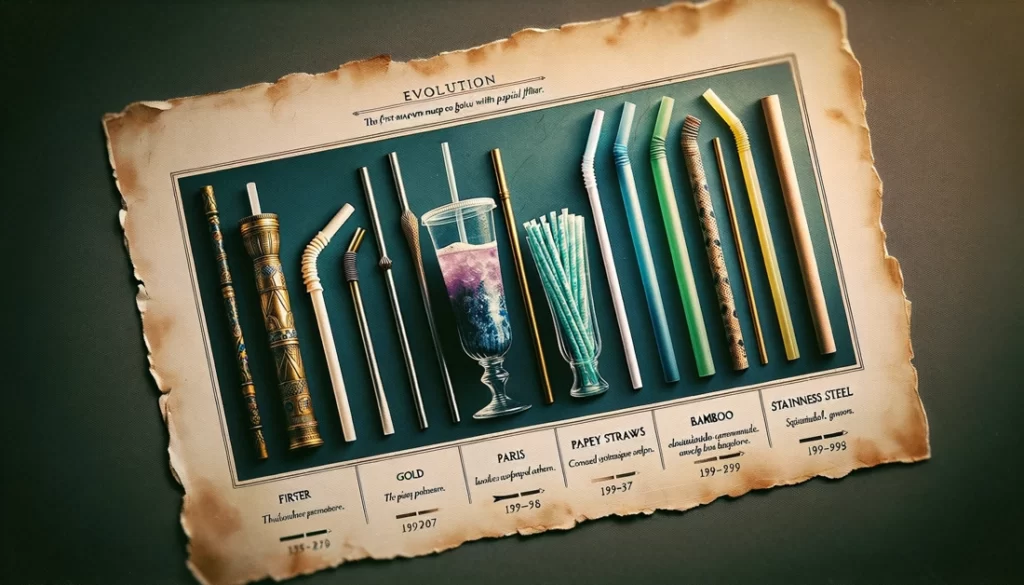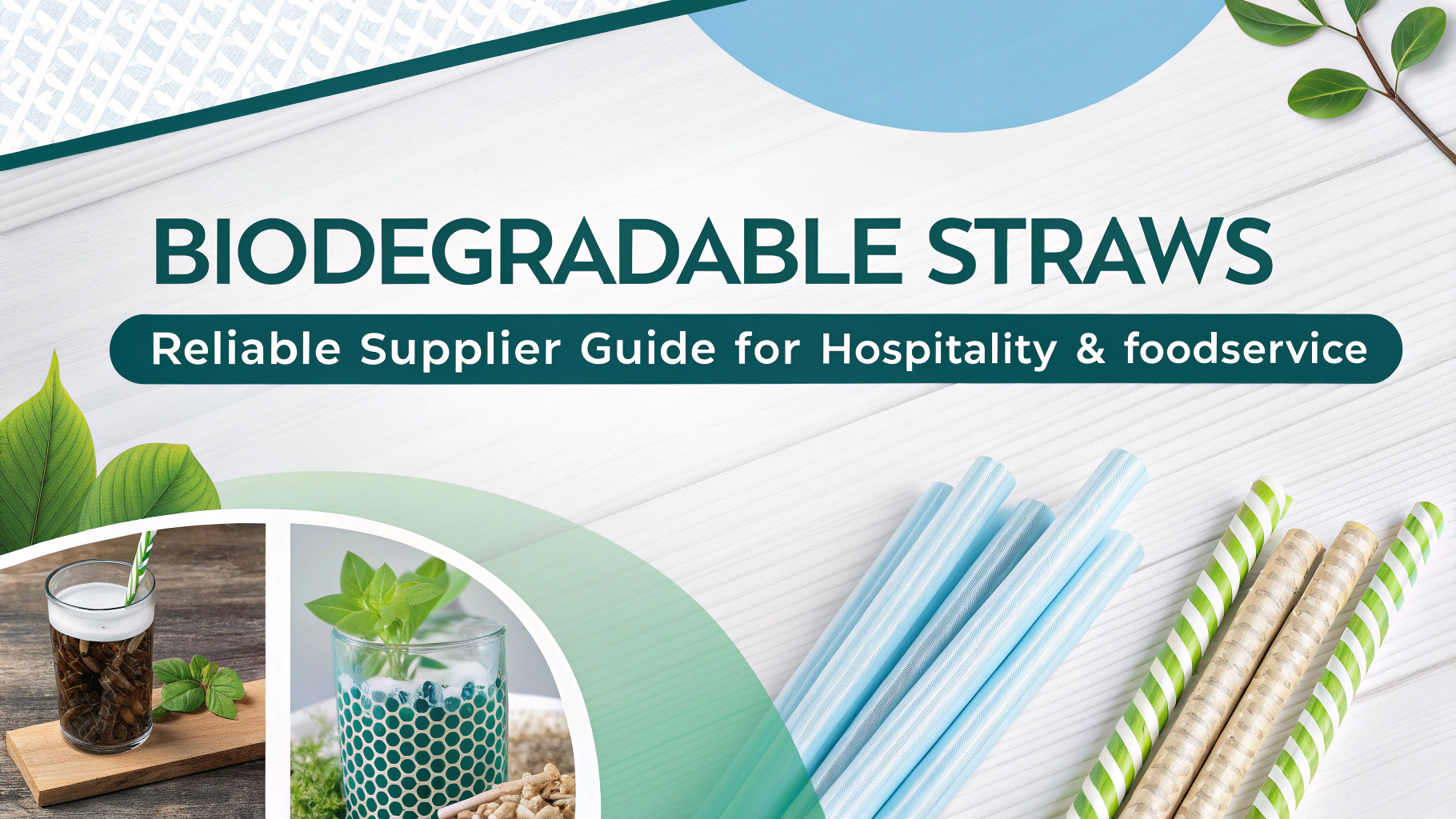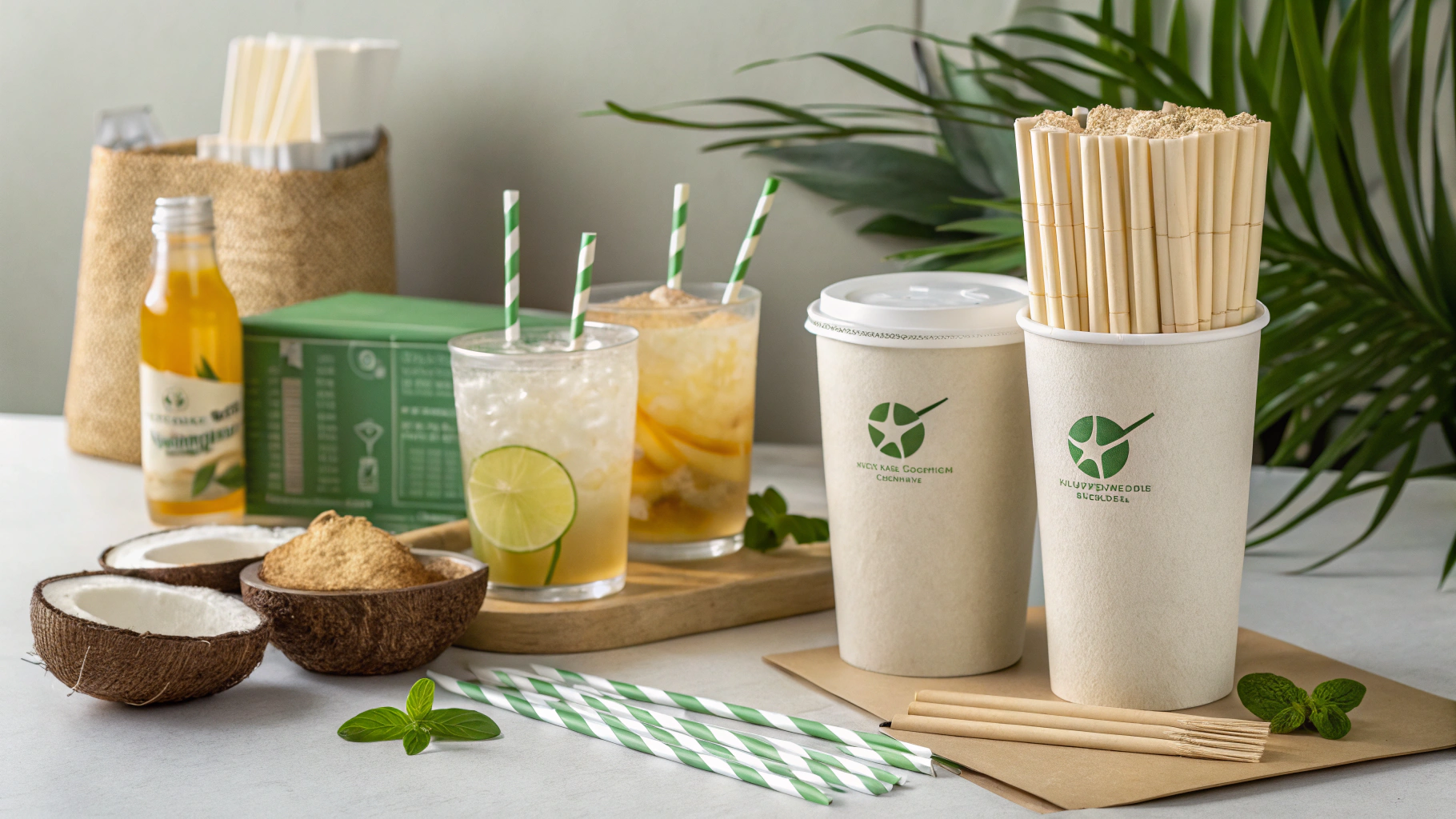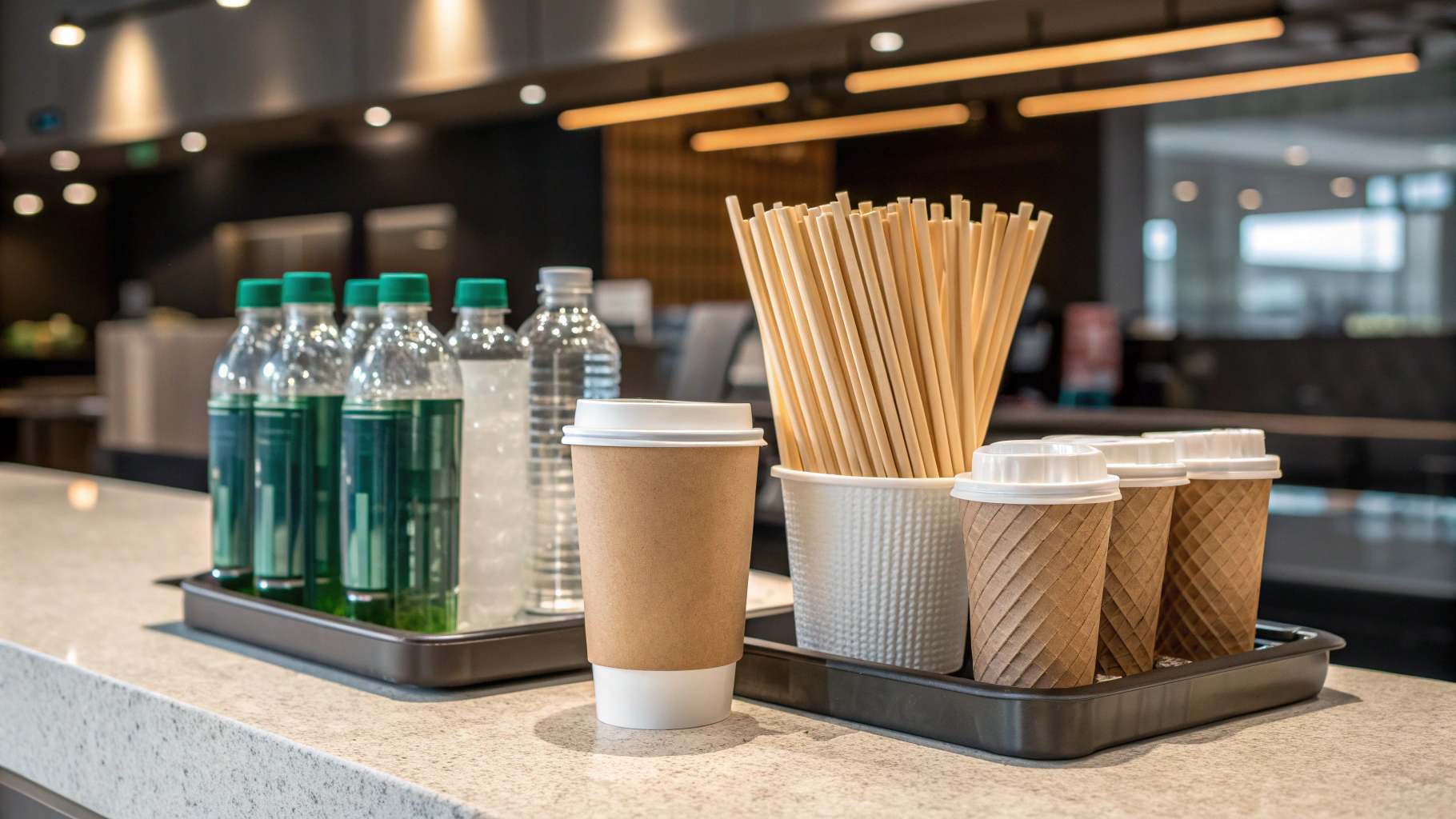
Você já tomou um gole de bebida e se perguntou sobre a origem daquele tubo simples, mas funcional, que está usando? O canudo, algo que muitas vezes consideramos natural, tem uma história cativante que está entrelaçada com cultura, invenção e sustentabilidade. Vamos mergulhar, certo?
Índice
| Sr# | Títulos |
|---|---|
| 1 | As origens antigas |
| 2 | Do ouro ao centeio |
| 3 | O nascimento do canudo moderno |
| 4 | Plásticos assumem o controle |
| 5 | Preocupações Ambientais |
| 6 | Canudos de Cana-de-Açúcar: Uma Alternativa Sustentável |
| 7 | Benefícios das palhas de cana-de-açúcar |
| 8 | A Jornada Global de Adoção |
| 9 | O futuro dos canudinhos |
| 10 | Inspirando-se no passado |
As origens antigas
Já pensou em nossos ancestrais bebendo suas bebidas favoritas? Os primeiros canudos eram feitos de ouro, adornados com a pedra azul lápis-lazúli, e eram usados pelos sumérios para beber cerveja. Esse item de luxo os protegia dos sedimentos fermentados que se depositavam no fundo dos potes.
Do ouro ao centeio
Com o tempo, os extravagantes canudos dourados deram lugar a outros mais práticos. As pessoas recorreram a materiais naturais e os canudos feitos de azevém tornaram-se populares. Porém, havia um problema: eles ficavam moles depois de algum uso. Você não gostaria de um gole com gosto de grama, não é?
O nascimento do canudo moderno
Isso nos leva a Marvin Stone, o homem por trás do canudo de papel. No final do século 19, irritado com os resíduos de palha de centeio, Stone enrolou tiras de papel em volta de um lápis, colou-as e voilà! A palha moderna nasceu.
Plásticos assumem o controle
À medida que as indústrias evoluíram, também evoluíram os materiais. O plástico, por ser barato e durável, parecia o substituto perfeito para o papel. Em meados do século 20, os canudos de plástico dominavam o cenário. Sua flexibilidade os tornou populares, especialmente na área da saúde, para os pacientes beberem líquidos.
Preocupações Ambientais
No entanto, como uma faca de dois gumes, a durabilidade do plástico tornou-se a sua ruína. Canudos plásticos descartáveis começaram a se acumular, prejudicando a vida marinha e poluindo nosso planeta. Era hora de reconsiderar. Se ao menos existisse um material que combinasse durabilidade e sustentabilidade?
Canudos de Cana-de-Açúcar: Uma Alternativa Sustentável
Entra em cena canudos de cana-de-açúcar. Aproveitando o poder da natureza, estes canudos oferecem uma solução ecológica. Feitos de fibras de cana-de-açúcar, eles se decompõem naturalmente, garantindo uma pegada mínima de carbono. Não é incrível como a inovação pode estar enraizada na simplicidade da natureza?
Benefícios das palhas de cana-de-açúcar
Not only are sugarcane straws environmentally friendly, but they also provide an enjoyable sipping experience. Free from the problems of rye grass and the environmental concerns of plastic, they seem to be the best of both worlds.
A Jornada Global de Adoção
Countries and companies across the globe are acknowledging the benefits of sugarcane drinking straws. With bans on single-use plastics, there’s a growing shift towards these sustainable alternatives.
O futuro dos canudinhos
What’s next for the humble drinking straw? As sustainability becomes a global priority, innovations like sugarcane straws set the stage for a greener future.
Inspirando-se no passado
Olhando para trás, fica evidente que a jornada do canudo é como um rio, fluindo e se adaptando constantemente. E tal como os rios muitas vezes conduzem de volta ao oceano, as nossas inovações, como a palhinha de cana-de-açúcar, estão a levar-nos de volta à natureza.
Em conclusão, a história das palhinhas para beber não é apenas uma história de inovação, mas também um reflexo dos valores e prioridades da sociedade. À medida que avançamos, vamos valorizar as lições do passado e preparar o caminho para um futuro sustentável.
Perguntas frequentes:
P1: Quando foram introduzidos os canudos de cana-de-açúcar?
A1: Os canudos de cana-de-açúcar são uma inovação relativamente recente, ganhando destaque na última década como uma alternativa ecologicamente correta aos canudos plásticos.
Q2: Quanto tempo duram os canudos de cana-de-açúcar em uma bebida?
A2: Os canudos de cana-de-açúcar podem durar várias horas em uma bebida sem ficarem encharcados, o que os torna um substituto viável para canudos plásticos descartáveis.
P3: Os canudos de cana-de-açúcar são compostáveis?
A3: Sim, os canudos de cana-de-açúcar são biodegradáveis e podem ser compostados, retornando à natureza em pouco tempo.
Q4: Como os canudos de cana-de-açúcar diferem dos canudos de papel?
A4: Embora ambos sejam ecologicamente corretos, os canudos de cana-de-açúcar tendem a ser mais resistentes e duram mais em bebidas do que os canudos de papel.
P5: Por que há uma pressão por alternativas aos canudos de plástico?
A5: Os canudos de plástico não são biodegradáveis e contribuem para a poluição ambiental, prejudicando especialmente a vida marinha. Alternativas como canudos de cana-de-açúcar visam reduzir esse impacto ambiental.






